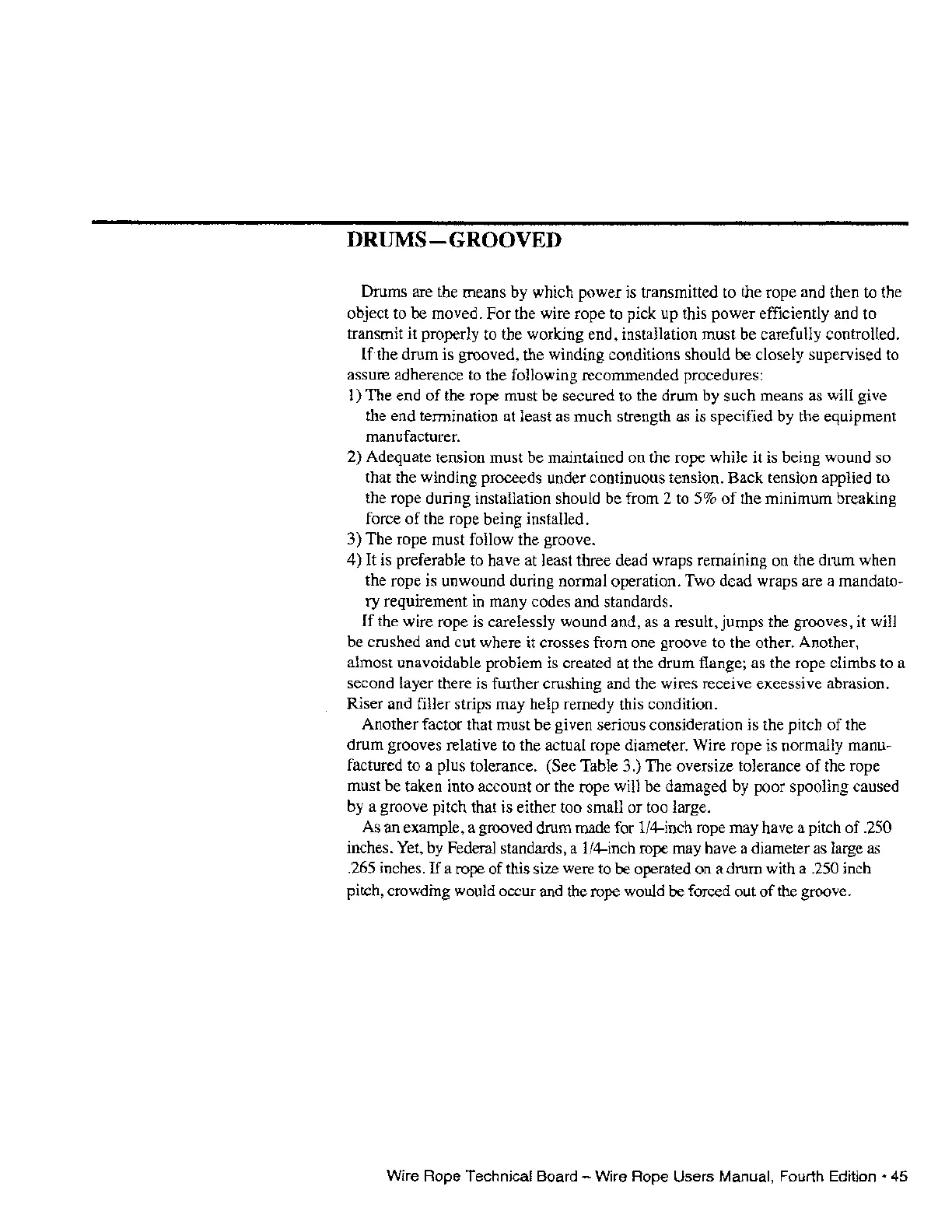DRUMS-GROOVED
Drums are the means
by
which
power
is transmitted to the rope and then to the
object to
be
moved.
For
the wire rope to pick
up
this
power
efficiently and to
transmit
it
properly to the working end, installation
must
be
carefully controlled.
lithe
drum
is grooved, the winding conditions should
be
closely supervised to
assure adherence to the following recommended procedures:
1) The
end
of
the rope
must
be
secured to the
drum
by
such means as will give
the
end
termination at least as
much
strength as is specified by the equipment
manufacturer.
2) Adequate tension
must
be
maintained
on
the rope while
it
is being
wound
so
that the winding proceeds under continuous tension.
Back
tension applied to
the rope during installation should
be
from 2 to 5%
of
the
minimum
breaking
force
of
the rope being installed.
3) The rope
must
follow the groove.
4)
It is preferable to have at least three dead wraps remaining
on
the
drum
when
the rope is
unwound
during normal operation. Two dead wraps are a mandato-
ry requirement
in
many
codes and standards.
If
the wire rope is carelessly
wound
and, as a result,
jumps
the grooves, it will
be
crushed
and
cut
where
it
crosses from one groove to the other. Another,
almost unavoidable problem is created at the
drum
flange; as the rope climbs to a
second layer there is further crushing and the wires receive excessive abrasion.
Riser
and
filler strips may help remedy this condition.
Another factor that
must
be
given serious consideration is the
pitch
of
the
drum
grooves relative to the actual rope diameter. Wire rope is normally manu-
factured to a
plus
tolerance. (See Table 3.)
The
oversize tolerance
of
the rope
must
be
taken into account
or
the rope will
be
damaged
by
poor
spooling caused
by
a groove pitch that is either too small
or
too large.
As an example, a grooved drum made for 1I4-inch rope may have a pitch
of
.250
inches. Yet, by Federal standards, a 114-inch rope may have a diameter as large as
.265 inches.
If
a rope
of
this size were to be operated
on
a drum with a .250 inch
pitch, crowding would occur and the rope would
be
forced out
of
the groove.
Wire Rope Technical Board - Wire Rope Users Manual, Fourth
Edition'
45
